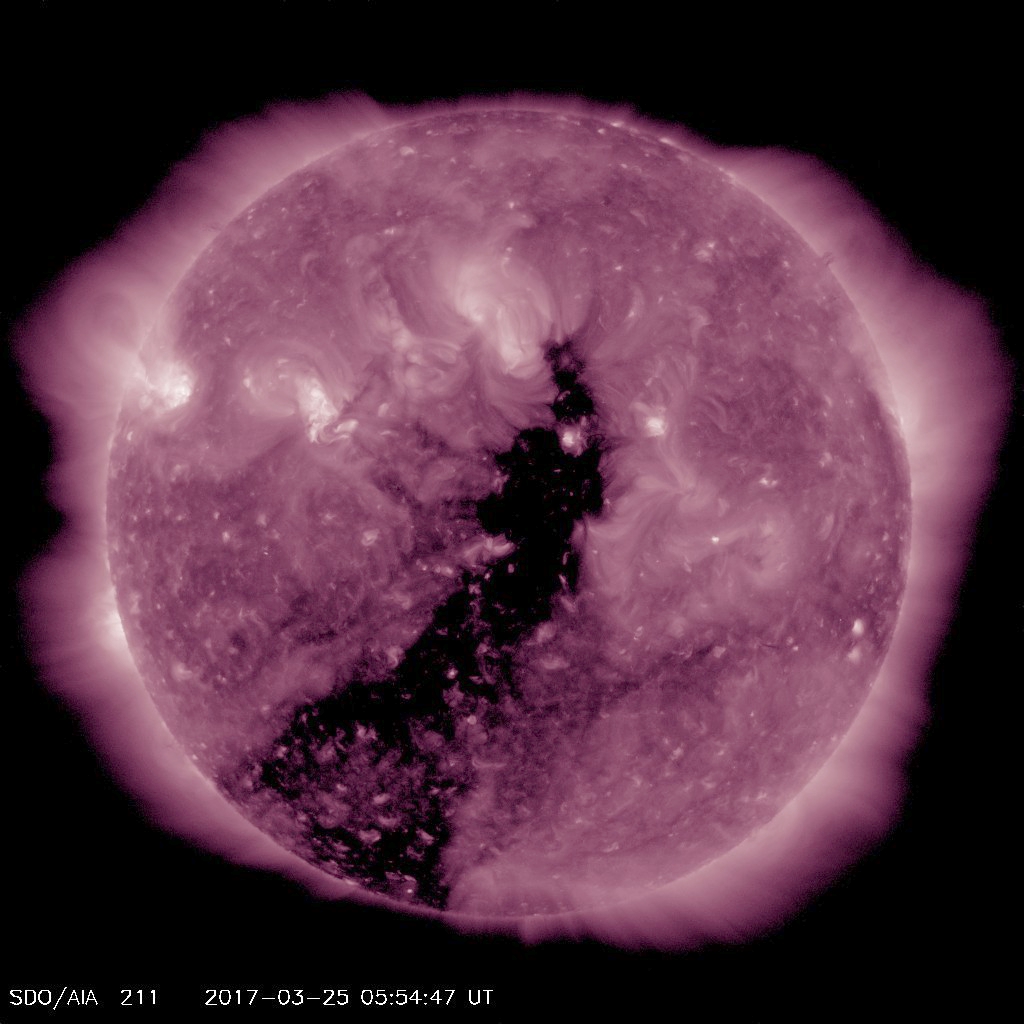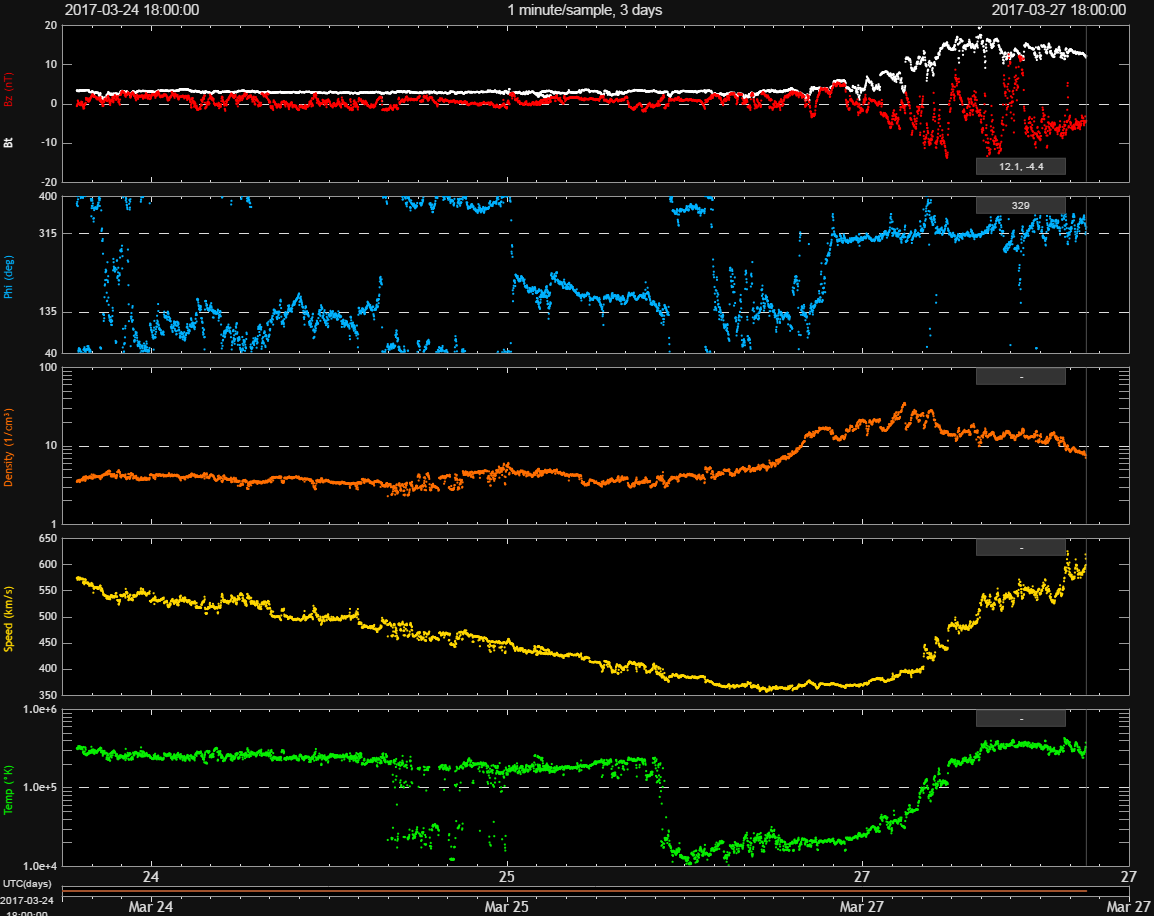Space Weather Alert - 27 March 2017
What Has Happened?
A large coronal has rotated around the Sun to an Earth-facing position. This morning the solar wind speed increased, marking the arrival of the coronal hole's high speed solar wind stream. Since it's arrival there have been stormy geomagnetic conditions, reaching STORM G2 before midday today (27th March).
This coronal hole has faced the Earth before and caused several STORM G1 periods, and an isolated G2 period. The coronal hole does not appear to have decreased in size, so it is likely to cause a similar elevation in geomagnetic activity again. Activity may peak over the night of 27th-28th March, but STORM periods are expected for the next 2-3 days.
Assuming clear dark skies, there is an increased chance of seeing the aurora, particularly for those in Scotland, northern England and Northern Ireland.
Sign-up to receive Geomagnetic Disturbance Alert emails.
Follow us on Twitter:
Follow @BGSauroraAlert for more occasional aurora alerts.
Follow @BGSspaceWeather for daily space weather forecasts.
Glossary
- BGS
- The British Geological Survey is one of the Natural Environment Research Council's Research Centres.
- Coronal Hole
- A region in the Sun’s outer atmosphere (corona) where hot material can flow unrestrained by its magnetic fields out into space.
- High Speed Stream
- A fast moving stream of solar wind, responsible for magnetic storms.
- Magnetogram
- The variation, minute by minute, of the strength and direction of the Earth’s magnetic field. Measured in units of nano-Tesla (for the strength of the field) or in degrees (direction of the field).
Solar Wind- The ever-present expansion of the Sun’s hot outer atmosphere into the solar system, which carries space weather within it.



